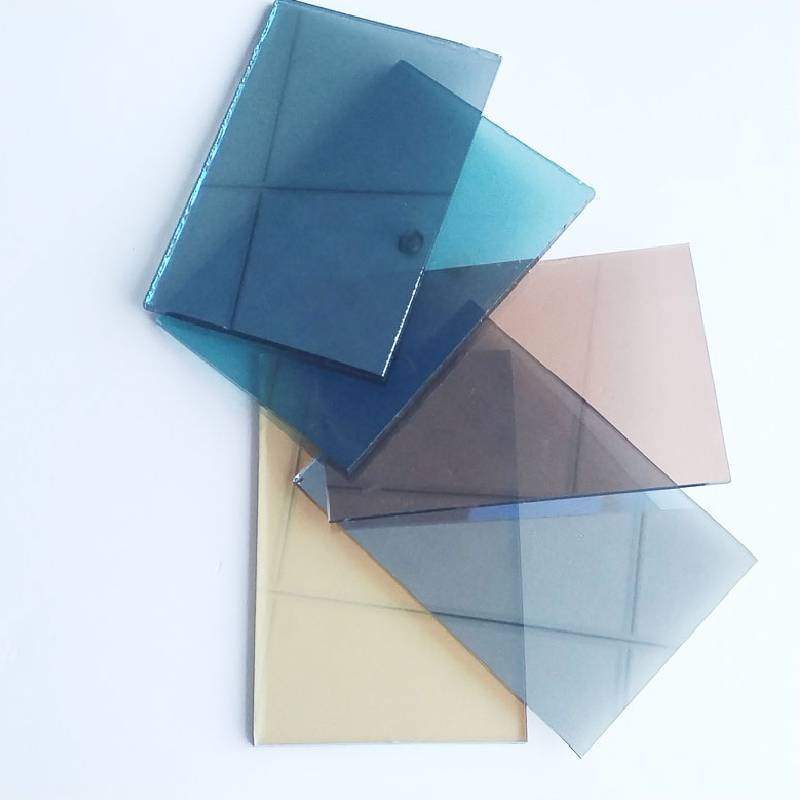The float glass making process is a pivotal and widely utilized manufacturing technique for producing high-quality flat glass for various applications, including windows, mirrors, and glass facades. This method, developed in the mid-20th century, allows for a refined glass product with excellent optical clarity and uniform thickness. The process involves several key stages that transform raw materials into finished glass sheets.
The journey begins with the selection of raw materials, primarily silica sand, soda ash, and limestone. These materials are carefully weighed and blended to form a batch that is then transported to a furnace. The furnace, typically operating at temperatures around 1,700 degrees Celsius (3,092 degrees Fahrenheit), is responsible for melting the raw materials. This intense heat causes the ingredients to melt and form molten glass, which is the foundation for the subsequent steps.
Once the glass is molten, it undergoes a crucial phase known as the 'floating' stage. In this stage, the molten glass is poured onto a bed of molten tin, creating a flat surface. The unique properties of tin allow the glass to spread evenly and float, resulting in a smooth and uniform thickness. The floating effect also minimizes the risk of imperfections that could arise during other forming methods, giving float glass its renowned quality. The thickness of the glass can be controlled by adjusting the speed at which the glass is drawn off the tin bath.
As the glass moves away from the float bath, it enters the annealing lehr, a temperature-controlled furnace designed to gradually cool the glass. This cooling process is critical for relieving internal stresses and ensuring the structural integrity of the glass. The glass is maintained at a specific temperature for a designated period before it is cooled down to room temperature, helping to prevent cracks and defects.
float glass making process
Once the float glass has been properly cooled, it is then cut into sheets according to specified sizes and customer requirements. This cutting process can be automated, utilizing precision machinery to ensure accuracy and efficiency. After cutting, the glass sheets may undergo additional processes such as tempering, which enhances its strength and durability, or coating, which adds certain properties like UV resistance or anti-reflective features.
The float glass making process is not only renowned for its quality but also for its environmental efficiency. Modern float glass plants leverage advanced technology to minimize energy consumption and reduce waste, making the production process more sustainable. Many facilities implement closed-loop systems to recycle glass cullet (waste glass) back into the manufacturing process, further decreasing the demand for raw materials and minimizing environmental impact.
In conclusion, the float glass making process is an intricate and efficient method of producing high-quality flat glass. From the careful selection of raw materials to the final cutting and treatment processes, each stage is crucial in ensuring that the resultant product meets the stringent demands of various industries. As the demand for flat glass continues to grow, innovations in technology and sustainability practices further enhance the efficacy and environmental responsibility of this essential manufacturing process.
 Afrikaans
Afrikaans  Albanian
Albanian  Amharic
Amharic  Arabic
Arabic  Armenian
Armenian  Azerbaijani
Azerbaijani  Basque
Basque  Belarusian
Belarusian  Bengali
Bengali  Bosnian
Bosnian  Bulgarian
Bulgarian  Catalan
Catalan  Cebuano
Cebuano  Corsican
Corsican  Croatian
Croatian  Czech
Czech  Danish
Danish  Dutch
Dutch  English
English  Esperanto
Esperanto  Estonian
Estonian  Finnish
Finnish  French
French  Frisian
Frisian  Galician
Galician  Georgian
Georgian  German
German  Greek
Greek  Gujarati
Gujarati  Haitian Creole
Haitian Creole  hausa
hausa  hawaiian
hawaiian  Hebrew
Hebrew  Hindi
Hindi  Miao
Miao  Hungarian
Hungarian  Icelandic
Icelandic  igbo
igbo  Indonesian
Indonesian  irish
irish  Italian
Italian  Japanese
Japanese  Javanese
Javanese  Kannada
Kannada  kazakh
kazakh  Khmer
Khmer  Rwandese
Rwandese  Korean
Korean  Kurdish
Kurdish  Kyrgyz
Kyrgyz  Lao
Lao  Latin
Latin  Latvian
Latvian  Lithuanian
Lithuanian  Luxembourgish
Luxembourgish  Macedonian
Macedonian  Malgashi
Malgashi  Malay
Malay  Malayalam
Malayalam  Maltese
Maltese  Maori
Maori  Marathi
Marathi  Mongolian
Mongolian  Myanmar
Myanmar  Nepali
Nepali  Norwegian
Norwegian  Norwegian
Norwegian  Occitan
Occitan  Pashto
Pashto  Persian
Persian  Polish
Polish  Portuguese
Portuguese  Punjabi
Punjabi  Romanian
Romanian  Russian
Russian  Samoan
Samoan  Scottish Gaelic
Scottish Gaelic  Serbian
Serbian  Sesotho
Sesotho  Shona
Shona  Sindhi
Sindhi  Sinhala
Sinhala  Slovak
Slovak  Slovenian
Slovenian  Somali
Somali  Spanish
Spanish  Sundanese
Sundanese  Swahili
Swahili  Swedish
Swedish  Tagalog
Tagalog  Tajik
Tajik  Tamil
Tamil  Tatar
Tatar  Telugu
Telugu  Thai
Thai  Turkish
Turkish  Turkmen
Turkmen  Ukrainian
Ukrainian  Urdu
Urdu  Uighur
Uighur  Uzbek
Uzbek  Vietnamese
Vietnamese  Welsh
Welsh  Bantu
Bantu  Yiddish
Yiddish  Yoruba
Yoruba  Zulu
Zulu 

